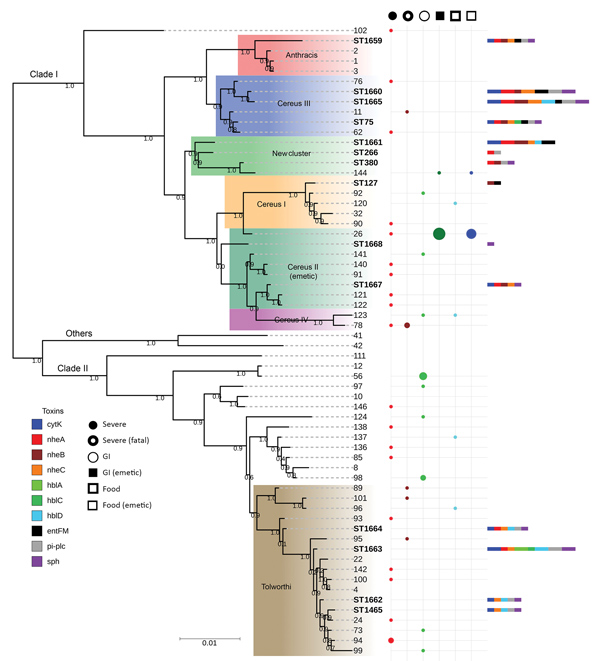Volume 25, Number 7—July 2019
Synopsis
Bacillus cereus–Attributable Primary Cutaneous Anthrax-Like Infection in Newborn Infants, India
Figure 5

Figure 5. Maximum-likelihood tree constructed on the basis of concatenated sequences of the 51 Bacillus cereus STs illustrating the phylogenetic relatedness of the 14 STs identified during investigation of an outbreak at Assam Medical College & Hospital, Dibrugarh, India, 2018, and the 37 STs representing clinical isolates. The bootstrap support values for the nodes are indicated in decimals. The STs represented in bold letters are identified in this study. The color gradient boxes represent the various lineages found within the clades. The colored circle plot represents the number of isolates from various human diseases assigned to a particular ST, and each color represents a different human disease. The size of each circle is proportionate to the number of isolates. The multicolored bar indicates the number of toxin-encoding genes found in isolates represented by an ST and each color represents different toxin-encoding genes. The length of each colored bar is proportionate to the number of isolates positive for that toxin-encoding gene. GI, gastrointestinal; ST, sequence type. Scale bar indicates nucleotide substitutions per site.
1Current affiliation: Gauhati Medical College & Hospital, Guwahati, India.